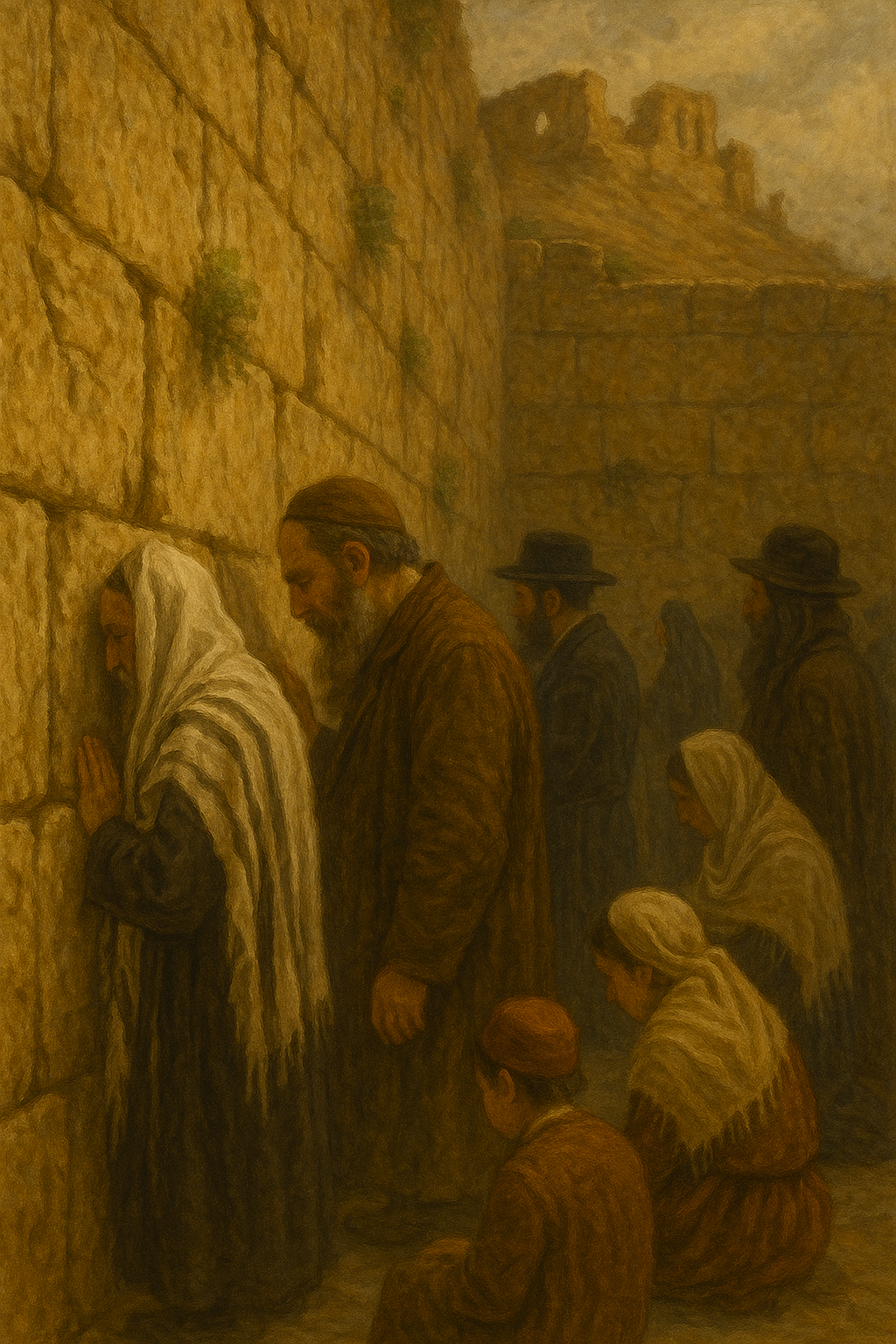Lesson 3: Judaism over the Centuries (The Hebrews and Judaism)
⚔️ Revolt, Defeat, and Migration
Long ago, the Jewish people lived in a land called Judea. But in A.D. 66, they started a revolt (a fight back) against the Roman Empire. The Jews wanted to be free.
The Romans were powerful. After years of fighting, in A.D. 70, they broke into Jerusalem and destroyed the Second Temple, the most holy place for Jews. Only one wall remained — today it's called the Western Wall, and it’s still a place where Jews go to pray. 🧱🙏
Story Time! Some Jewish people ran to a mountain fortress called Masada. They stayed there for years, holding off the Romans. When the Romans finally climbed the mountain, the Jews had chosen to die free instead of being slaves.
In A.D. 135, there was a second revolt, but again, the Romans won. Many Jews had to leave their homeland. This was the start of the Diaspora, the time when Jews were spread all over the world. In many places, they were not treated fairly. They faced discrimination, were sometimes forced to move, and could not have equal rights.
🌍 Two Cultural Traditions
As Jews moved to new places, they kept their faith—but their customs (ways of living) became a little different based on where they lived.
🕍 Jews in Eastern Europe
These Jews are called Ashkenazim. They spoke a language called Yiddish, a mix of Hebrew and other European languages. They often lived in small villages called shtetls, where they shared stories, songs, and celebrated holidays together—even during hard times.
Fun Fact: Many Ashkenazi Jews became great musicians, writers, and teachers. Their stories were often full of humor and wisdom!
🕌 Jews in Spain and Portugal
These Jews are called Sephardim. They lived in places with more freedom, especially during the Golden Age in Spain. They spoke Ladino, a mix of Hebrew and Spanish. Sephardic Jews were poets, doctors, and scientists.
But later, they were forced to leave Spain in 1492 if they didn’t change their religion. Many went to places like Turkey or North Africa.
🎉 Traditions and Holy Days
Jews celebrate many special holidays that help them remember their history and thank God.
🕎 Hanukkah
Hanukkah celebrates the time when a small group of Jews, the Maccabees, fought back and took their temple from Greek rulers. They only had enough oil for one day, but the light burned for eight days—a miracle!
Today, Jewish families light the menorah, eat fried foods like latkes (potato pancakes), and play with dreidels (spinning tops).
🍷 Passover
Passover remembers the Exodus, when Moses led the Jews out of slavery in Egypt. During Passover, families eat a special meal called the Seder. Each food on the plate has a meaning, like bitter herbs to remember the sadness of slavery.
Children at the table ask questions like: “Why is this night different from all other nights?”
📿 High Holy Days
These are the most holy days of the year for Jews.
Rosh Hashanah is the Jewish New Year, a time to think about the past year and what to do better.
Yom Kippur is the Day of Atonement, a very serious day when Jews ask God to forgive their mistakes.
On Yom Kippur, many Jews fast (don’t eat or drink) for 25 hours and spend the day praying.
📝 Summary
Jews fought the Romans but were defeated. Many had to leave their land.
Two Jewish traditions grew in different places: Ashkenazim in Eastern Europe and Sephardim in Spain and Portugal.
Jews celebrate many holidays, like Hanukkah, Passover, and the High Holy Days, to remember their history and stay close to God.
